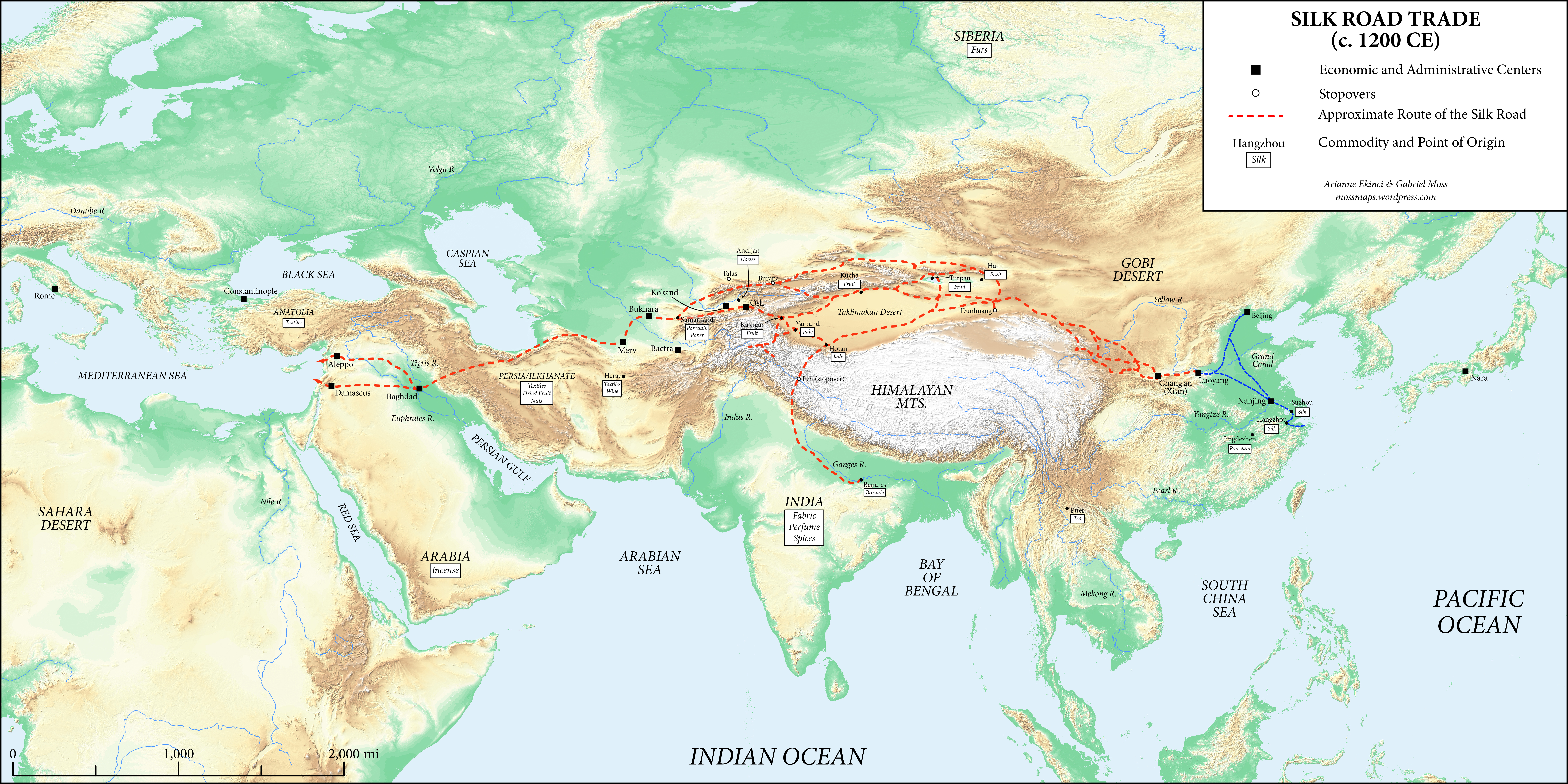The Silk Road: How Ancient Trade Routes Shaped the Modern World
The Enduring Legacy of the Silk Road: Connecting Civilizations East and West
Introduction Imagine a vibrant network of routes that, for centuries, served as the primary conduit for global interaction. The Silk Road was not merely a single path but a vast, intricate web of trade routes spanning over 4,000 miles, linking the East and West. Far more than just a passage for silk – though this precious commodity was indeed central – this historical trade route facilitated an unparalleled exchange of goods, ideas, religions, and cultures. This profound interconnection fundamentally shaped the civilizations it touched. This article delves into the rich history and lasting impact of the Silk Road, exploring its origins, peak, decline, and its remarkable modern revival.
The Origins and Development of the Silk Road: Ancient Trade Routes Emerge (2nd Century BCE - 14th Century CE)
The Silk Road’s origins are deeply rooted in Ancient China, specifically during the Han Dynasty (207 BCE – 220 CE). Emperor Wu of Han famously dispatched Zhang Qian as an envoy. His mission was to forge alliances against the Xiongnu, a formidable nomadic group threatening China's borders. While a full military alliance didn't completely materialize, Zhang Qian's extensive travels were pivotal. They opened up vital trade routes into Central Asia, marking the inception of significant exchange, most notably Chinese silk for Central Asian horses and other valuable commodities.
Initially, these trade routes were predominantly land-based, navigating formidable geographical challenges like the vast Taklamakan Desert and the towering Pamir Mountains. Over the centuries, the network diversified, branching into several distinct pathways – including the Northern Route, the Southern Route, and the crucial Maritime Silk Road. This expansion allowed for the exchange of a wider variety of goods and connected an even broader range of regions. Key urban centers such as Chang'an (modern-day Xi'an), Samarkand, Bukhara, and Constantinople blossomed into vibrant trading hubs, becoming true melting pots of diverse cultures and commerce along this extensive trade route.
Beyond Silk: Goods, Ideas, and Cultural Exchange Along the Silk Road
While exquisite Chinese silk was indeed a highly coveted commodity in the West, the Silk Road facilitated much more than just the trade of this single luxury item. It enabled the movement of a vast array of goods. From China came essential items like tea, fine porcelain, exotic spices, precious jade, and revolutionary paper. In return, the West provided goods such as wool, linen, gleaming gold, silver, dazzling precious stones, glass, and various forms of livestock. However, the Silk Road’s most profound impact extended far beyond material trade.

Crucially, it served as an invaluable conduit for the transmission of groundbreaking ideas and diverse religions. Buddhism, originating in India, spread extensively eastward along the Silk Road, becoming deeply ingrained and influencing the cultures of China, Korea, and Japan. Other significant faiths, including Nestorian Christianity, Manichaeism, and Islam, also journeyed along these extensive trade routes, establishing vibrant communities and shaping the religious landscapes of numerous regions. Furthermore, revolutionary technological advancements, such as the art of papermaking, the power of gunpowder, and the precision of the compass, migrated westward, significantly contributing to progress and innovation across Europe. Mathematical and astronomical knowledge also flowed in both directions, profoundly enriching global scientific understanding.
The Decline and Enduring Legacy of the Silk Road (15th Century CE onwards)
The prominence of the Silk Road as a primary trade route began its decline around the 15th century, influenced by a confluence of factors. The most significant was the emergence and rapid growth of maritime trade routes. Pioneered by European explorers like Vasco da Gama, these sea-based paths offered a considerably faster and more cost-effective alternative for transporting large volumes of goods across continents. Simultaneously, increasing political instability across Central Asia, including the fragmentation of the vast Mongol Empire, led to disruptions along the land-based trade routes and escalated risks for traveling merchants. Moreover, continuous advancements in shipbuilding techniques and navigation methods made sea travel increasingly efficient and appealing.
Despite its eventual decline as the dominant global trade route, the Silk Road’s legacy remains exceptionally profound. It was instrumental in fostering unprecedented cultural exchange, facilitating the widespread dissemination of knowledge, and undeniably contributing to the deep interconnectedness of ancient and medieval civilizations. The numerous historical cities that once thrived along the Silk Road continue to serve as powerful testaments to its rich history, and its far-reaching influence is still evident in the distinct art, architecture, and enduring traditions of the many regions it once vibrantly connected.
The Modern Silk Road: The Belt and Road Initiative
In the 21st century, the spirit of the ancient Silk Road is experiencing a remarkable resurgence through China's ambitious Belt and Road Initiative (BRI). This monumental infrastructure development project aims to rekindle and enhance global connectivity. The BRI endeavors to link Asia, Europe, and Africa through an expansive network of modern railways, new roads, bustling ports, and other critical infrastructure developments. While the BRI has generated both considerable enthusiasm and some skepticism globally, it undeniably represents a significant contemporary effort to re-establish robust economic and political connections along the historical Silk Road routes. This initiative powerfully demonstrates the enduring relevance and profound influence of this ancient network in our complex modern world.

Conclusion
The Silk Road stands as an extraordinary testament to the transformative power of global trade and profound cultural exchange. It was far more than a path for goods; it was a dynamic, living network that fostered the vital transmission of innovative ideas, diverse religions, and groundbreaking technologies, leaving an indelible mark on the history of the world. From its ancient origins to its ambitious modern revival through initiatives like the Belt and Road, the Silk Road continues to inspire, inform, and shape the deeply interconnected world we inhabit today, truly showcasing its enduring legacy as a pivotal trade route.
```
